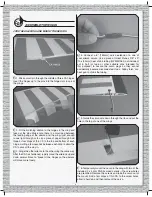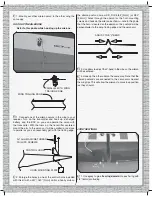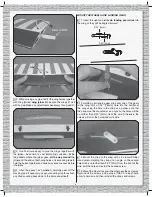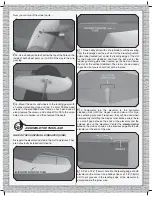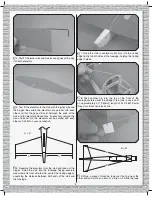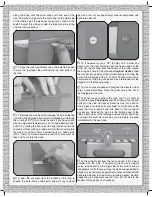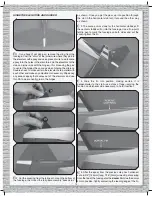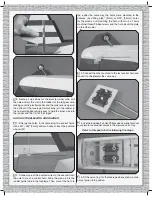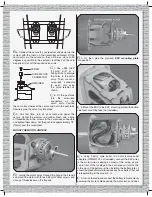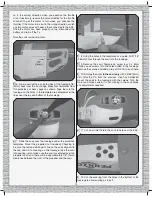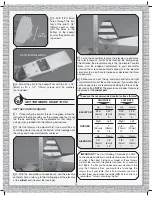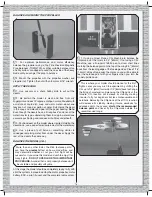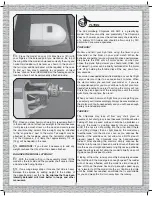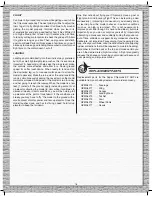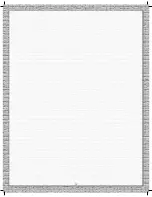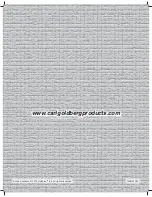
18
FLIGHT
Continue to fl y around for a minute while getting used to how
the Chipmunk responds. The next priority will be to adjust the
trims to get it to fl y straight-and-level. Continue to fl y around,
getting the model properly trimmed while you learn its
characteristics and get a good feel for how it fl ies. While still
at a high altitude, test to see how it handles when it’s time
to land by cutting motor power to check the glide path. Allow
it to glide as long as you like. Then, apply power and climb
again to altitude. Perform this exercise a few times so you will
be ready to make a good landing. Remember to monitor your
fl ight time so the motor doesn’t cut off.
LANDING
Landing any model directly into the wind is always preferred,
but with a small, lightweight plane such as this it is even more
important. A headwind will help keep the wings level, make
the controls more effective and allow for a slower ground
speed for softer touchdowns. When ready to land and on
the downwind leg, cut or reduce motor power to allow the
model to descend. Make the turn across the wind toward the
runway, simultaneously keeping the nose down so the model
maintains airspeed. Add power if the model is too far away
and not going to reach the runway. When the model is a few
feet [1 meter] off the ground, apply increasing amounts of
up elevator allowing the model to slow while it continues to
descend. Ideally, in calm conditions, you will be holding full
up elevator at the point of touchdown. If the conditions are
breezy you may have to “fl y” the model to the ground with a
small amount of motor power and less up elevator. Once the
model touches down and has lost fl ying speed, hold full up
elevator to keep the tail down.
One fi nal note about fl ying your Chipmunk. Have a goal or
fl ight plan in mind for every fl ight. This can be learning a new
maneuver(s), improving a maneuver(s) you already know,
or learning how the model behaves in certain conditions
(such as on high or low rates). This is not necessarily to
improve your skills (though it is never a bad idea!), but more
importantly so you do not surprise yourself by impulsively
attempting a maneuver and suddenly fi nding that you’ve run
out of time, altitude or airspeed. Every maneuver should be
deliberate, not impulsive. For example, if you’re going to do a
loop, check your altitude, mind the wind direction (anticipating
rudder corrections that will be required to maintain heading),
remember to throttle back at the top, and make certain you
are on the desired rates (high/low rates). A fl ight plan greatly
reduces the chances of crashing your model just because of
poor planning and impulsive moves.
REPLACEMENT PARTS
Replacement parts for the Super Chipmunk EP ARF are
available from your hobby dealer or mail-order company:
GPMA4270 . . . . Fuselage
GPMA4271 . . . . Wing
GPMA4272 . . . . Canopy
GPMA4273 . . . . Landing Gear
GPMA4274 . . . . Tail Set
GPMA4275 . . . . Cowl
GPMA4276 . . . . Wheel Pants
GPMA4277 . . . . Decals

